Indonesian Vanilla Beans – Wholesale & Gourmet Grade A
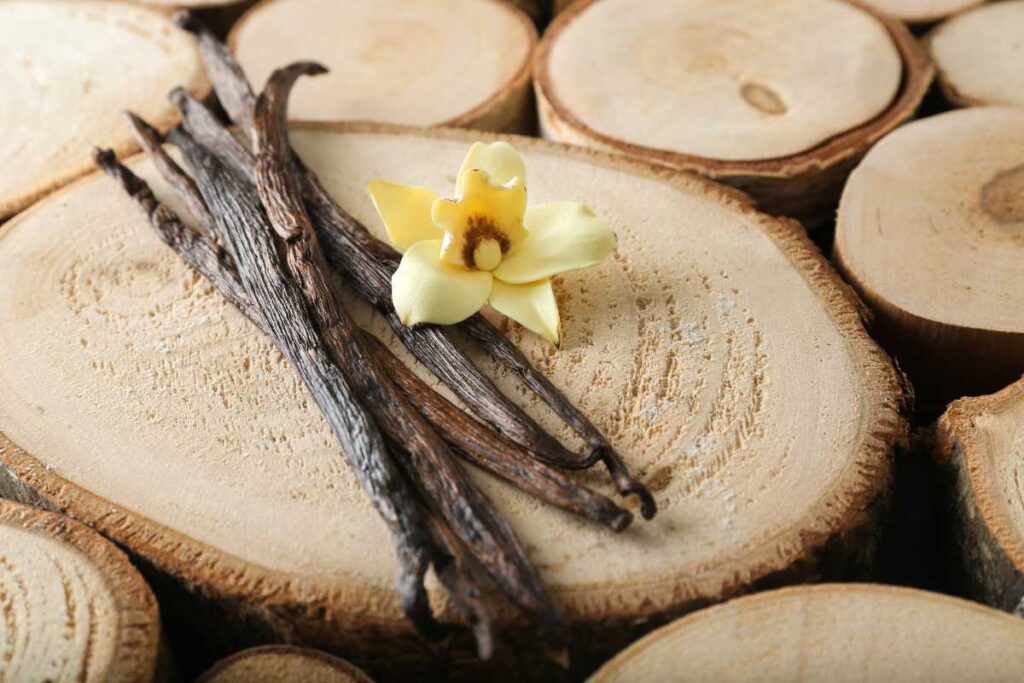
Are you a culinary enthusiast searching for that secret ingredient to elevate your dishes? Look no further than the exquisite Indonesian vanilla beans. These gourmet gems are highly sought-after and prized for their unparalleled flavor and captivating aroma. With their exceptional taste and enticing scent, these beans are perfect for adding an extra layer of deliciousness to your recipes. Whether you’re a professional chef or a home cook, these beans will surely impress. Don’t wait any longer, order now and experience the amazing taste of Indonesian vanilla beans delivered right to your doorstep. Check out our website for more details and read the rave reviews from our satisfied customers.
Grown in the lush tropical climate of Indonesia, these gourmet vanilla beans thrive in the perfect conditions, resulting in exceptional quality. The rich volcanic soil of Sumatra, one of the main regions where these wild pod vanilla beans are cultivated, imparts a distinct taste that sets them apart from other varieties. From these beans, we extract pure vanilla for your culinary delights.
Indonesian vanilla beans are renowned worldwide for their versatility in adding taste to any dish. Whether you’re preparing a decadent dessert or a savory masterpiece, these beans extract taste and add depth and complexity. They enhance the richness of sauces, marinades, and even seafood dishes. The details of their unique flavor profile infuse sweetness into pastries, ice creams, and custards. Experience the exceptional quality with our reliable delivery service. Don’t just take our word for it, read the rave reviews from satisfied customers.
Indonesian vanilla beans are the best price for high-quality extract. The wild pod vanilla harvested in Indonesia offers exceptional size and plumpness, ensuring each bean is bursting with intense flavor and aromatic compounds. Enjoy the details of these beans, delivered right to your doorstep.
So why settle for ordinary when you can indulge in the extraordinary? Treat yourself to the best price on our exceptional Indonesian vanilla beans and extract a world of culinary possibilities. Let these remarkable beans transport your dishes to new heights as you savor their unmatched quality and unrivaled taste. Enjoy fast and reliable delivery to get all the details you need for your culinary adventures.
Get ready to embark on a flavorful journey as we delve deeper into the captivating realm of Indonesian vanilla beans. Discover tips on sourcing the best beans, explore unique recipes that showcase their brilliance, and unravel the secrets behind this culinary treasure trove. Prepare to be amazed by what awaits you! Plus, enjoy a taste of these exquisite beans with our free US shipping and delivery. Don’t miss out on this opportunity to extract the true taste of Indonesian vanilla beans. Read our review now!
Brief history of vanilla cultivation in Indonesia
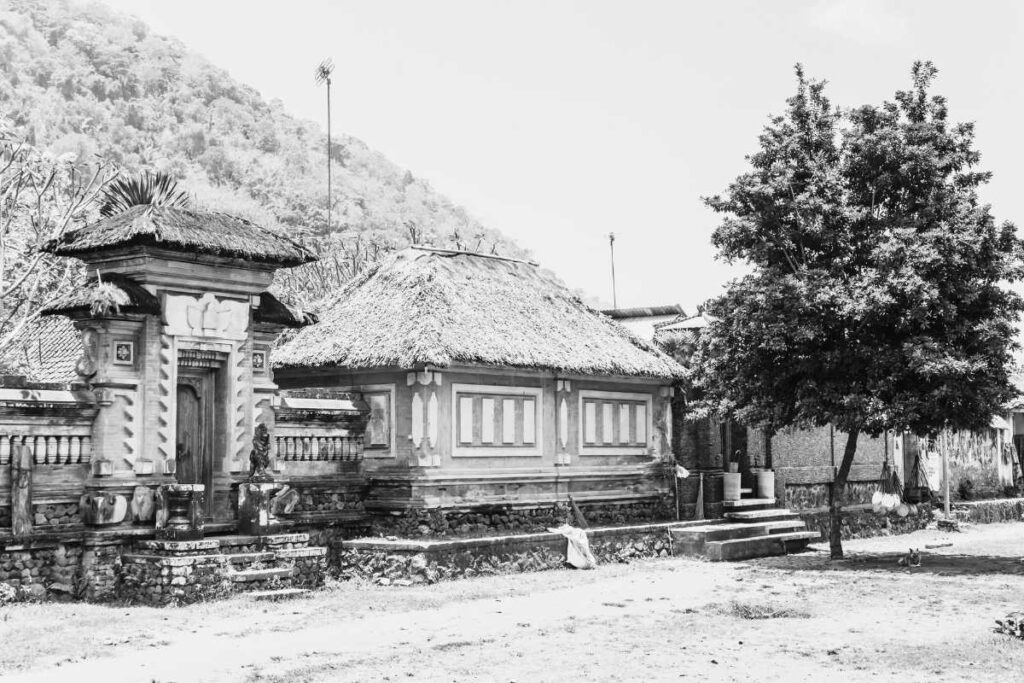
Vanilla cultivation in Indonesia dates back centuries.
Indonesia has a long and rich history in cultivating vanilla beans, extracting the best grade of this aromatic spice. The country’s tropical climate and fertile soil create perfect conditions for growing and delivering high-quality vanilla. Indonesian farmers have been passing down their knowledge and expertise from one generation to the next for centuries.
Introduced by the Dutch during colonial times.
The cultivation of vanilla in Indonesia, known for its planifolia bean origin, can be traced back to the colonial period when the Dutch introduced this valuable crop from their colonies in Madagascar and Reunion Island to the archipelago. The Dutch East India Company recognized the potential of vanilla and began growing it on a large scale in Java, Sumatra, and other regions. This kickstarted the industry in Indonesia, making it a prominent member of the bean family.
Flourished due to the country’s ideal growing conditions.
Indonesia’s unique geography and climate provide optimal conditions for growing high-quality vanilla beans. The country’s volcanic soil is rich in nutrients, which contributes to the robust flavor profile of Indonesian vanilla. Its equatorial location ensures a consistent year-round temperature that is crucial for successful cultivation and delivery. These factors combined have allowed Indonesian farmers to extract and produce some of the finest grade vanilla beans globally.
Today, Indonesia is one of the largest producers of vanilla beans globally.
Over time, Indonesia has emerged as one of the world’s leading producers of vanilla beans. With its vast plantations spread across various islands like Java, Bali, Sulawesi, and Sumatra, it consistently supplies a significant portion of global demand for this precious spice. The quality and quantity produced by Indonesian farmers have made them key players in international markets, ensuring timely delivery of high-grade vanilla beans.
The industry has played a significant role in the country’s economy.
The success of vanilla cultivation has had a profound impact on Indonesia’s economy. The extraction of vanilla provides employment opportunities for thousands of farmers who rely on this crop as their primary source of income. The export of vanilla extract contributes to the country’s foreign exchange earnings and helps boost its overall economic growth. The industry has also led to the development of supporting sectors such as processing, packaging, and logistics, further stimulating economic activity.
The cultivation of vanilla in Indonesia is deeply ingrained in the country’s history and culture. Indonesian vanilla beans are highly sought after for their unique flavor profile, characterized by sweet, creamy notes with hints of floral undertones. Whether used in desserts, beverages, or savory dishes, Indonesian vanilla extract adds a distinct touch that elevates any recipe. It has become an integral part of local traditions and culinary practices.
Indonesia’s rich heritage in vanilla cultivation continues to thrive today, with farmers expertly extracting high-quality beans. Their dedication ensures a steady supply of authentic Indonesian vanilla, cherished by chefs and food enthusiasts worldwide. As demand for natural flavors grows, Indonesian vanilla remains a top choice rooted in centuries-old traditions.
The Lifecycle of a Vanilla Bean
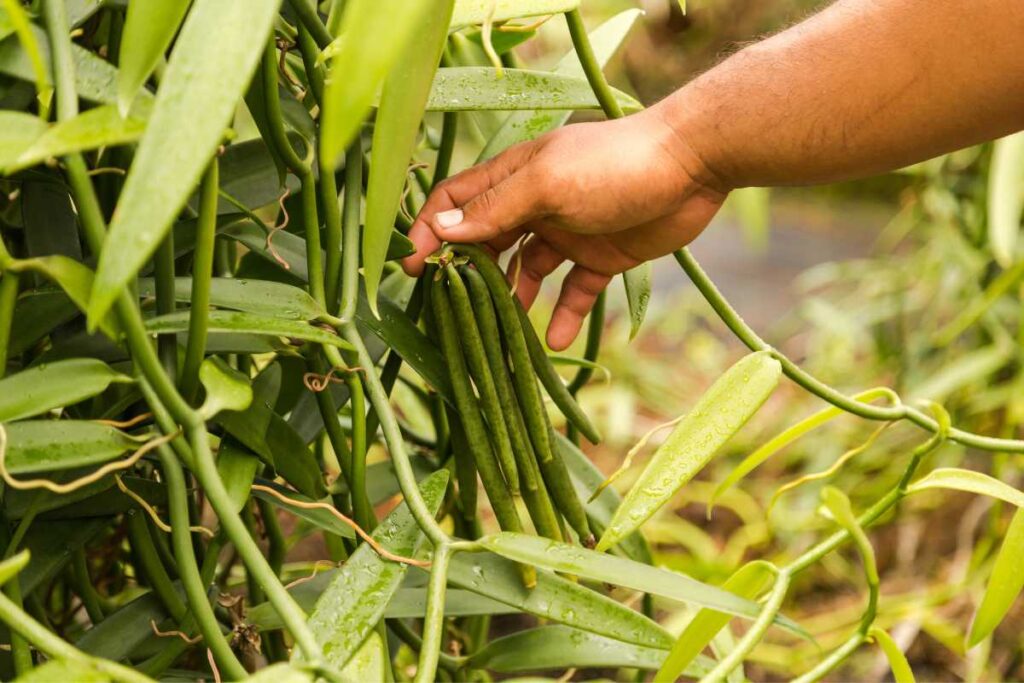
Hand-pollination: A Crucial Step for Successful Bean Production
In the world of vanilla bean cultivation, hand-pollination plays a vital role in ensuring successful bean production. Unlike many other plants that rely on natural pollinators like bees or wind, vanilla orchids require human intervention to reproduce. This labor-intensive process involves carefully transferring pollen from the male part of the flower (the anther) to the female part (the stigma), which is located inside the flower. Farmers meticulously perform this delicate task using a small stick or toothpick to extract and transfer the pollen.
The reason behind this manual pollination method lies in the unique structure of vanilla orchid flowers. These flowers possess a specialized mechanism known as “rostellum,” which acts as a barrier preventing self-pollination and promoting cross-pollination. Without human assistance, these beautiful flowers would wither away without producing any extract.
Maturation: Patience Rewarded on the Vine
Once successfully pollinated, vanilla beans extract embark on a journey of maturation that can take several months. As they hang from their vines, these green pods gradually transform into plump and aromatic treasures. During this period, it’s essential for farmers to provide proper care and maintenance to ensure optimal growth of the extract.
The environment plays a crucial role in determining how long it takes to extract vanilla beans. Factors such as temperature, humidity, and sunlight exposure all contribute to the extraction process. In regions where vanilla is grown, like Madagascar or Tahiti, specific climate conditions are ideal for cultivating high-quality beans for extraction.
Throughout this maturation process, the gourmet vanilla beans undergo physical changes that indicate their readiness for harvest. They transition from green to yellow and eventually darken into a rich brown coloration when fully matured. Farmers closely monitor each pod’s progress, eagerly awaiting the moment when they can finally be harvested to produce high-quality pure vanilla extract.
Curing: Unleashing Flavor Potential through Careful Processing
Once harvested, vanilla beans must undergo a curing process to extract and unlock their full flavor potential. This crucial step involves a series of carefully controlled procedures that transform the raw pods into the fragrant and sought-after ingredient we know and love.
The first stage of curing pure vanilla is known as blanching. The beans are briefly immersed in boiling water, which serves to kill any bacteria on the surface and initiate enzymatic reactions within the pod. After blanching, the beans are quickly plunged into cold water to halt further cooking.
Next comes the sweating phase, where the vanilla beans are wrapped in thick blankets or placed in insulated containers for several days. This allows the wild pod vanilla to slowly dry out and begin developing its unique aroma. During this time, enzymes break down complex compounds within the bean, releasing volatile components that contribute to its characteristic scent of pure vanilla.
Following sweating, vanilla beans enter a period of drying and conditioning. They are spread out on racks or mats exposed to air but protected from direct sunlight. Over the course of weeks or even months, these precious pods gradually lose moisture while continuing to develop their distinct flavors.
Proper Handling and Storage: Preserving Quality for Culinary Delights
To ensure that your precious stash of Indonesian vanilla beans remains at its best, proper handling and storage techniques are essential. Vanilla’s delicate nature requires special care to maintain its quality over time.
Firstly, it’s crucial to store vanilla beans in an airtight container away from heat sources or direct sunlight. Excessive exposure to light and heat can cause them to dry out prematurely or lose their potent flavors.
Consider storing your vanilla beans alongside other ingredients with complementary aromas. The porous nature of vanilla allows it to absorb surrounding scents easily. By keeping it near items like coffee beans or chocolate bars, you can infuse subtle hints of additional flavors into your own homemade vanilla extract.
Lastly, don’t forget about regular inspections! Check your stored vanilla periodically for any signs of mold or spoilage. If you notice any issues, promptly discard the affected beans to prevent contamination.
Detailed flavor profile of Indonesian vanilla
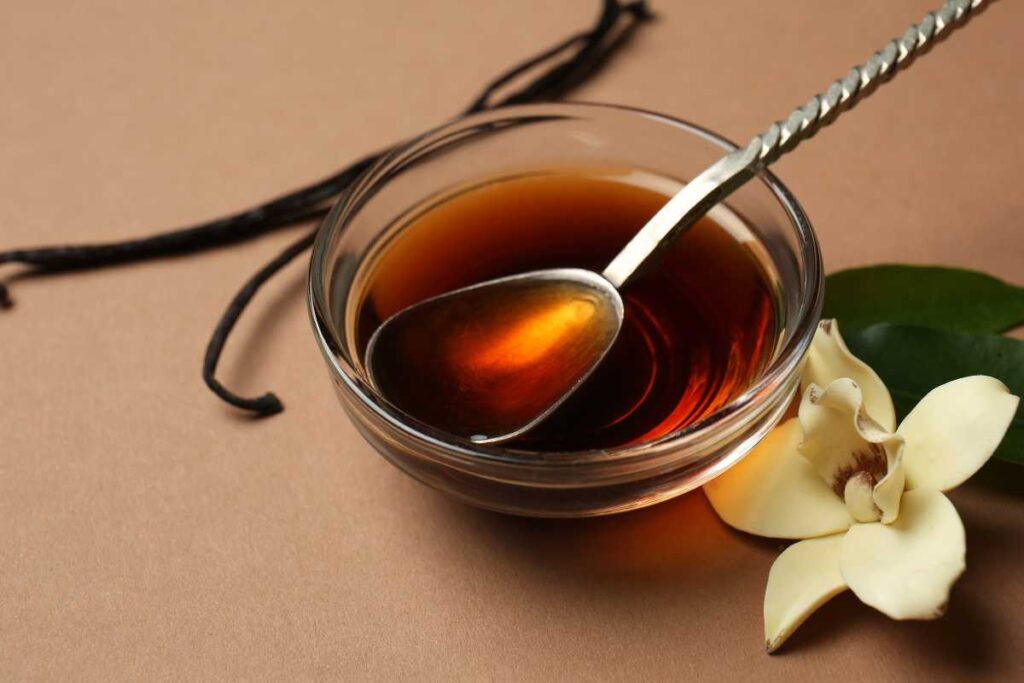
Rich, Creamy, and Slightly Sweet Flavor
Indonesian vanilla beans are renowned for their exceptional flavor profile.These beans offer a rich, creamy, and slightly sweet experience that is truly delightful. The natural sweetness of Indonesian vanilla adds depth and complexity to any dish or beverage it is used in.
The gourmet quality of Indonesian vanilla shines through in its flavor. The beans are carefully cultivated and harvested with great attention to detail, resulting in a superior taste that sets them apart from other varieties. Whether you’re using them in baking or cooking, the distinct flavors of Indonesian vanilla will elevate your culinary creations to new heights.
Floral Aroma with Hints of Chocolate or Caramel Notes
In addition to its incredible taste, Indonesian vanilla also boasts an enticing aroma. When you open a bag of these beans, you’ll be greeted by a captivating fragrance that is often described as floral with hints of chocolate or caramel notes. This aromatic profile adds another layer of complexity to the overall sensory experience.
Imagine the enchanting scent of freshly baked goods wafting through your kitchen as you use Indonesian vanilla, a member of the bean family, in your favorite recipes. The combination of floral undertones with subtle hints of chocolate or caramel creates an irresistible aroma that will make your mouth water even before taking a bite. Discover the rich flavors and origins of the bean family with Indonesian vanilla.
Smooth and Velvety Texture
One notable characteristic of Indonesian vanilla beans is their smooth and velvety texture. When incorporated into dishes or beverages, these beans lend a luxurious mouthfeel that enhances the overall dining experience. Whether you’re making ice cream, custards, or sauces, the addition of Indonesian vanilla will result in a delightfully silky texture.
The velvety nature of Indonesian vanilla makes it particularly well-suited for desserts where texture plays a crucial role. From creamy puddings to luscious cakes, this variety adds a touch of indulgence that can transform an ordinary treat into a decadent delight. The smoothness of the beans ensures a seamless integration, leaving no grainy residue behind.
Intense Yet Balanced Taste
Indonesian vanilla, from the bean family, is known for its intense yet balanced taste. Unlike some other varieties from different bean origins that may overpower a dish or beverage with their strong flavors, Indonesian vanilla strikes the perfect harmony between intensity and balance. This makes it incredibly versatile, suitable for both sweet and savory preparations.
When using Indonesian vanilla from the bean family in desserts, you’ll notice how it enhances the flavors without overwhelming them. It adds depth and richness to ice creams, custards, and pastries while allowing other ingredients to shine through. Similarly, when incorporated into savory dishes like sauces or marinades, Indonesian vanilla from the bean origin adds a unique twist that elevates the overall taste profile.
Types of Indonesian Vanilla Beans: Planifolia and Tahitensis
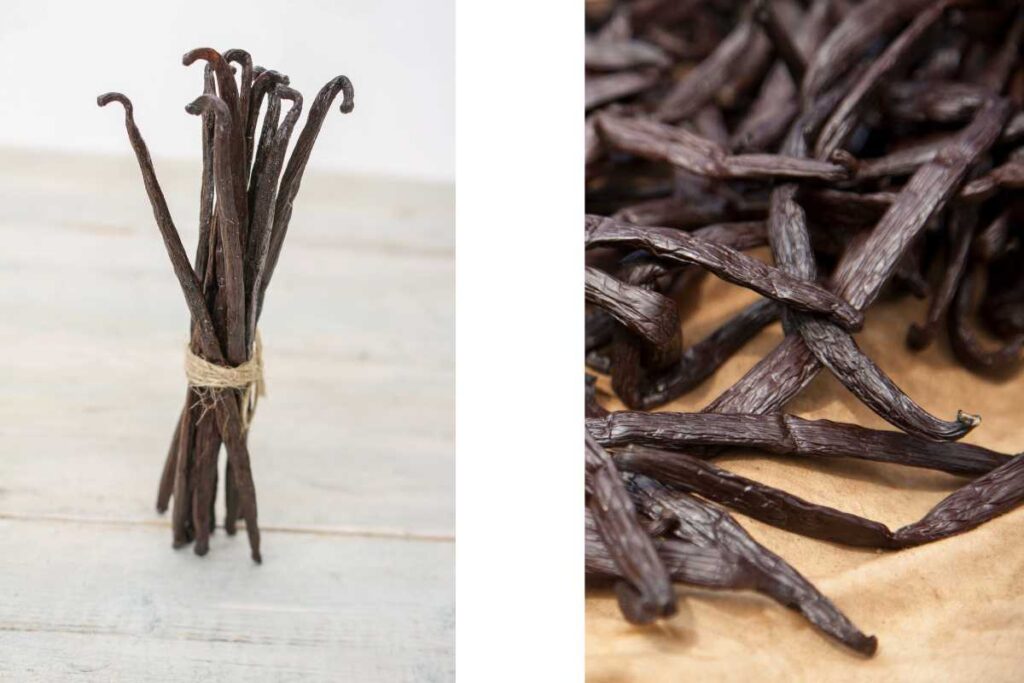
Planifolia (Bourbon) Variety: The Classic Indonesian Vanilla Bean
-
The Planifolia variety is the most common type of vanilla bean grown in Indonesia. It is also known as the Bourbon vanilla bean.
-
These beans are highly sought after for their classic vanilla flavor with subtle fruity undertones. They have a rich, creamy taste that adds depth to any recipe.
-
Due to their intense flavor profile, wild pod vanilla beans are often the preferred choice for making your own vanilla extract and traditional recipes like custards, ice creams, and baked goods.
-
When using Planifolia beans in your recipes, you can expect a robust vanilla flavor that enhances the overall taste experience.
Tahitensis Variety: Delicate Flavors with Floral Notes
-
The Tahitensis variety offers a more delicate flavor compared to its Planifolia counterpart. This type of vanilla bean is native to Tahiti but is also grown in Indonesia.
-
Tahitensis beans exhibit unique floral notes with hints of cherry or anise. These flavors create a distinct taste profile that sets them apart from other types of vanilla beans.
-
Because of its lighter and more exotic flavors, the Tahitensis variety, along with gourmet Indonesian vanilla beans and Sumatra Indonesian vanilla beans, is often used in lighter desserts, tropical dishes, and fruit-based recipes. It adds a touch of elegance and sophistication to any culinary creation, especially when making your own vanilla extract with wild pod vanilla.
Overview of Vanilla-Growing Regions
Key Regions for Vanilla Cultivation in Indonesia
Indonesia, a tropical paradise, is home to several key regions renowned for their vanilla cultivation. Let’s explore the main growing areas and how they contribute to the unique characteristics of Indonesian vanilla beans.
-
Java: Located in the western part of Indonesia, Java is one of the primary regions where vanilla thrives. The volcanic soil combined with its moderate climate creates an ideal environment for cultivating high-quality beans. The rich volcanic ash provides essential nutrients, resulting in robust and flavorful vanilla. Java’s long history of vanilla production has established it as a prominent player in the global market.
-
Bali: This enchanting island not only captivates tourists but also boasts excellent conditions for growing vanilla beans. Bali’s fertile soil, abundant rainfall, and warm temperatures offer an advantageous setting for cultivating this precious spice. As a result, Balinese vanilla exhibits a distinct aroma and flavor profile coveted by chefs and food enthusiasts worldwide.
-
Sumatra: Situated to the west of Java, Sumatra is another region that contributes significantly to Indonesia’s vanilla industry. Its diverse microclimates allow for year-round cultivation, ensuring a steady supply of beans throughout the year. From the lush rainforests near Bukit Barisan Mountains to the coastal plains near Aceh province, each area adds its own unique touch to Sumatran vanilla, making it highly sought after by connoisseurs.
Influences on Flavor Profiles
The varying soil types and microclimates across these regions play a crucial role in shaping the distinctive flavors found in Indonesian vanilla beans:
-
Soil Types: Different soils contain varying levels of minerals and organic matter that directly impact flavor development. For instance, Java’s volcanic soil imparts a subtle smoky note to its vanillin-rich beans. In contrast, Bali’s loamy soil contributes to its beans’ creamy and sweet characteristics. Sumatra, with its fertile clay soil, produces vanilla beans known for their deep, earthy flavors.
-
Microclimates: The unique combination of temperature, humidity, and sunlight in each region influences the growth and maturation of vanilla orchids. Java’s cooler temperatures result in a slower bean ripening process, allowing the flavors to develop gradually over time. Bali’s warm and humid climate accelerates the maturation process, creating beans with intense aromas. Meanwhile, Sumatra’s tropical climate fosters a balance between sweetness and complexity in its vanilla.
Year-Round Vanilla Production
Indonesia’s diverse geography allows for year-round cultivation of vanilla, a member of the bean family, across different regions. This consistent production is made possible by leveraging the country’s varied climates, which contribute to the bean origin.
-
Java: With its relatively mild weather patterns throughout the year, Java provides a stable environment for continuous vanilla production. Farmers can rely on a steady supply of fresh beans from this region.
-
Bali: The island’s tropical climate ensures that vanilla cultivation remains active throughout the year. This constant availability enables farmers to meet the growing demand for Balinese vanilla globally.
-
Sumatra: Thanks to its multiple microclimates, Sumatra offers an advantage. Even if certain areas experience seasonal variations or weather fluctuations, other parts of the region can compensate and maintain a consistent supply of premium-quality beans.
Importance of sustainability in vanilla cultivation
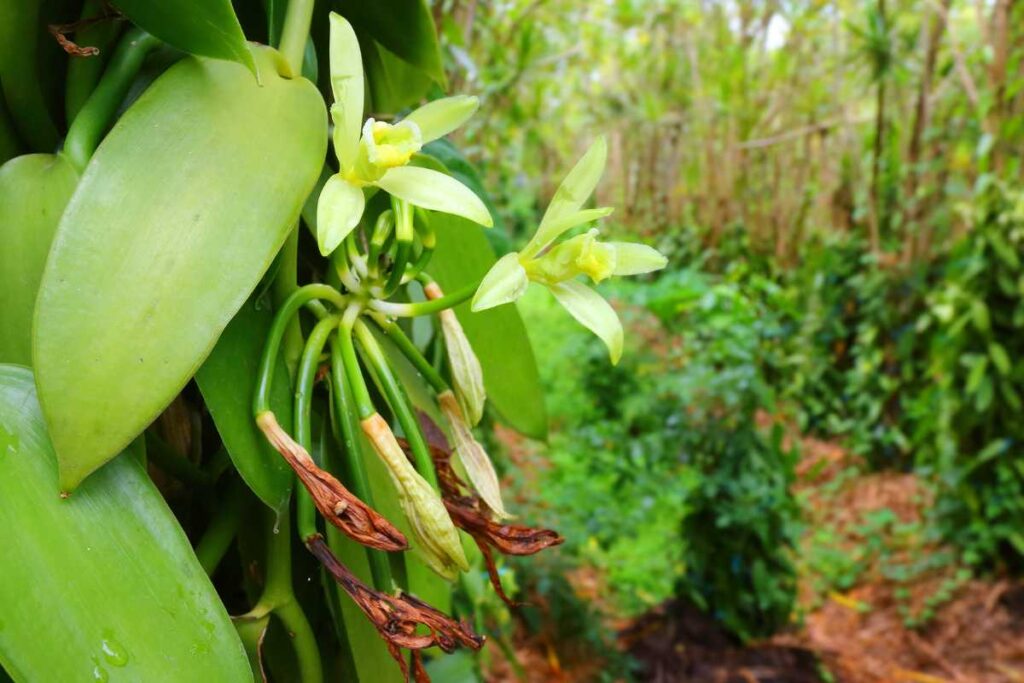
Protecting the Environment and Ensuring Long-Term Viability
Sustainable practices are crucial for the protection of our environment and the long-term viability of vanilla cultivation. By adopting responsible farming techniques, we can minimize negative impacts on ecosystems and preserve biodiversity in the bean family. This means avoiding harmful chemical pesticides and fertilizers that can contaminate soil, water sources, and harm beneficial organisms. These practices are particularly important for maintaining high bean quality from Indonesia, the bean origin.
In sustainable vanilla cultivation, farmers prioritize organic methods that work in harmony with nature. They employ natural pest control measures such as companion planting, where certain plants are grown alongside vanilla to deter pests naturally. They focus on conserving water resources through efficient irrigation systems and reducing waste by utilizing composting techniques. These practices contribute to the overall bean quality and origin of Indonesian vanilla.
Preserving Biodiversity and Natural Resources
The importance of sustainability in vanilla cultivation extends beyond protecting the environment. It also plays a significant role in preserving biodiversity and natural resources. Vanilla beans come from orchids that rely on specific pollinators for reproduction. Unsustainable practices like deforestation can disrupt these delicate ecosystems by destroying the habitats of pollinators such as bees and hummingbirds.
By embracing sustainable initiatives, farmers actively contribute to maintaining healthy ecosystems and improving Indonesia bean quality. They engage in reforestation efforts by planting trees that support pollinator populations while providing shade for vanilla vines, thus preserving the bean origin. These practices not only safeguard biodiversity but also ensure the continued existence of vital species within these fragile ecosystems.
Promoting Fair Trade Practices for Farmers and Communities
Sustainability in vanilla cultivation goes hand-in-hand with fair trade practices that benefit local farmers and communities. The demand for high-quality Indonesian vanilla beans has created economic opportunities for small-scale growers in rural areas. However, without fair trade principles, these farmers may face exploitation or receive inadequate compensation for their hard work.
Fair trade certification programs provide assurance to consumers that the quality of vanilla beans sourced from Indonesia is ethically and sustainably produced. When consumers choose products with fair trade labels, they support the livelihoods of Indonesian vanilla farmers and their communities. Fair trade initiatives ensure that these farmers receive fair prices for their high-quality crops, enabling them to invest in better farming techniques, education, healthcare, and infrastructure development.
Combating Deforestation Driven by Vanilla Demand
The global demand for vanilla has unfortunately led to deforestation in some regions. Unsustainable practices driven by high demand can result in clearing vast areas of land to make way for vanilla plantations. This not only contributes to climate change but also destroys vital habitats and threatens the survival of numerous plant and animal species.
Sustainable initiatives aim to combat deforestation caused by the increasing demand for vanilla. By implementing responsible land management practices, such as agroforestry systems, farmers can integrate vanilla cultivation with existing vegetation cover. This approach helps minimize the need for clearing new land while providing shade and protection for the delicate vanilla vines.
Encouraging Ethical Sourcing through Certification Programs
Certification programs play a pivotal role in encouraging ethical sourcing and supporting sustainable agriculture. These programs establish standards that ensure environmentally friendly practices are followed throughout the entire supply chain of vanilla production. By adhering to these standards, companies demonstrate their commitment to sustainability and provide consumers with transparent information about the origin and production methods of their products.
Certifications like Rainforest Alliance or Fairtrade enable consumers to make informed choices when purchasing Indonesian vanilla beans. They guarantee that farmers have met specific criteria related to environmental stewardship, social responsibility, and economic viability. Supporting certified products not only promotes sustainable farming but also empowers consumers to contribute positively towards a more equitable and environmentally conscious future.
When Indonesian Vanilla Beans are Harvested
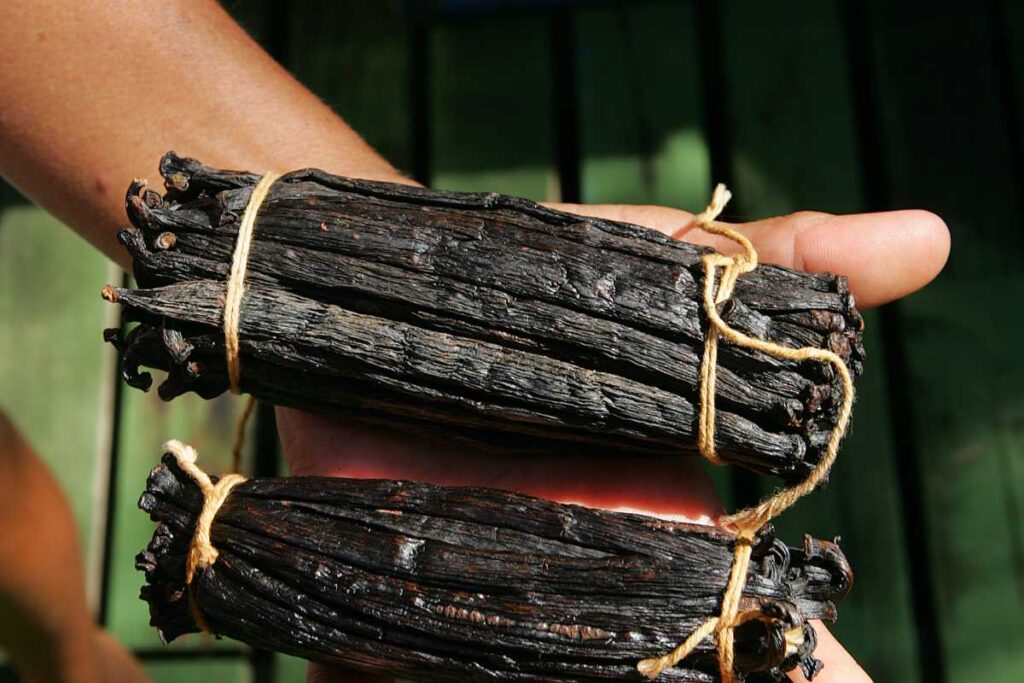
Harvesting Times and Methods
-
Vanilla beans are typically harvested when they reach full maturity on the vine. This ensures that they have developed their rich, aromatic flavors.
-
The exact harvesting times for Indonesian vanilla beans can vary depending on the specific region and climate conditions. Different areas may experience slightly different growing seasons, affecting when the beans are ready to be picked.
-
In Indonesia, most vanilla bean harvests occur between May and September. This period aligns with the optimal weather conditions for vanilla cultivation in the country.
-
Unlike some other crops that can be mechanically harvested, vanilla beans require careful hand-picking to ensure optimal quality. Skilled farmers selectively choose each bean, ensuring it meets the desired standards.
The Importance of Timing
Timing plays a critical role in capturing the perfect balance of flavors in Indonesian vanilla beans. Harvesting too early or too late can significantly impact the quality and taste of the final product.
When harvested at full maturity, Indonesian vanilla beans contain a complex array of flavor compounds. These compounds develop as the pods ripen on the vine, creating a unique profile that sets them apart from other varieties.
If harvested too early, before reaching their peak flavor potential, these vanilla beans may lack depth and complexity. On the other hand, waiting too long to harvest can lead to overripe pods with diminished vanilla extract flavor characteristics.
Therefore, farmers must carefully monitor their gourmet Indonesian vanilla beans crops in Sumatra to determine precisely when each pod is ready for harvest. They assess factors such as color changes in the bean’s skin and aroma intensity of the gourmet Indonesian vanilla beans to make informed decisions about picking time for the production of high-quality vanilla extract.
Hand-Picking Process
Hand-picking is an essential step in ensuring top-quality Indonesian vanilla beans. It requires skill and attention to detail from experienced farmers who know precisely what signs to look for when selecting each pod.
During harvesting season, farmers venture into their fields armed with baskets or bags to collect ripe vanilla pods one by one. They gently pluck the vanilla beans from the vine, being mindful not to damage them in the process.
The hand-picking process for vanilla extract allows farmers to assess each bean individually, ensuring that only the highest quality ones make it into the final product. By personally selecting each pod, they can discard any damaged or underdeveloped beans, guaranteeing a superior end result for vanilla extract.
This meticulous approach is time-consuming but necessary to maintain the reputation of Indonesian vanilla beans as a premium product. The attention to detail and care put into hand-picking contribute significantly to their exceptional flavor and aroma.
Traditional uses of Indonesian vanilla in cuisine
Treasured ingredient in Indonesian traditional sweets like kue lapis or klepon:
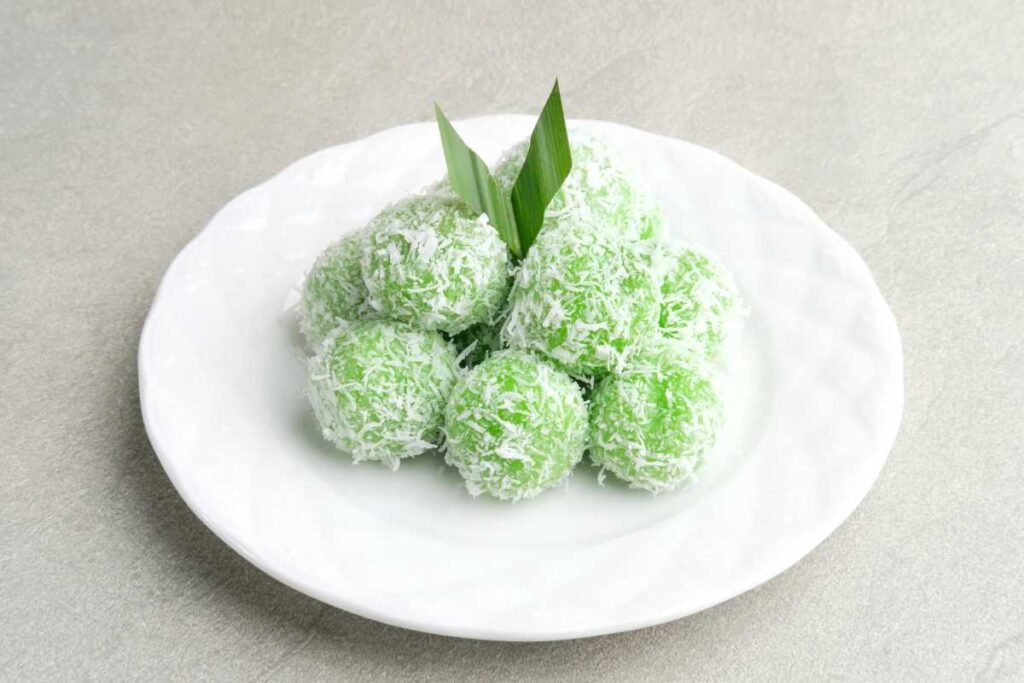
Indonesian vanilla beans hold a special place in the heart of traditional Indonesian sweets. One popular treat that showcases the exquisite flavor and aroma of these beans is kue lapis, also known as layered cake. The delicate layers of this dessert are infused with the rich essence of Indonesian vanilla, creating a harmonious blend of flavors that tantalize the taste buds. Each bite reveals a subtle sweetness and a hint of warmth, making it an irresistible delight for those with a sweet tooth.
Another beloved sweet treat that utilizes Indonesian vanilla is klepon, a traditional snack made from glutinous rice flour filled with liquid palm sugar and coated with grated coconut. The addition of Indonesian vanilla to the palm sugar filling elevates its taste to new heights. As you take a bite into these bite-sized delights, the burst of flavors will transport you to the vibrant streets of Indonesia, where these treats are enjoyed by locals and visitors alike.
Vanilla-infused beverages such as es cendol or bandrek:
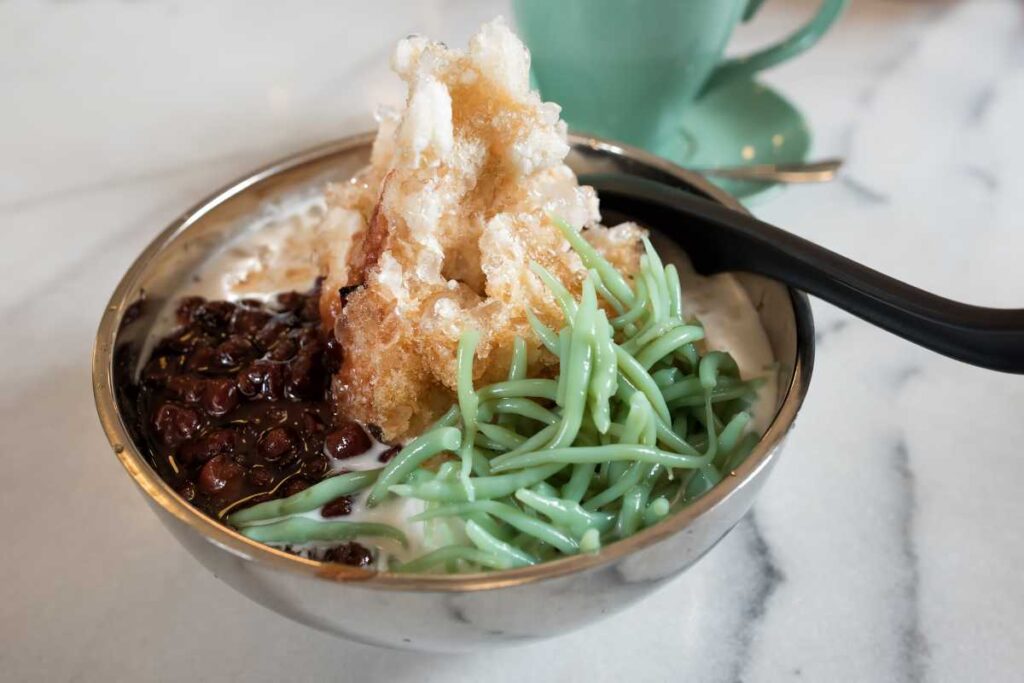
Indonesian cuisine is not limited to just desserts. Vanilla-infused beverages have also become popular choices among locals and tourists alike. One such beverage is es cendol, a refreshing drink made with coconut milk, pandan-flavored jelly noodles, palm sugar syrup, and crushed ice. The addition of Indonesian vanilla enhances the overall experience by imparting its aromatic notes into every sip. It adds depth to the creamy coconut milk base and balances out the sweetness from the palm sugar syrup.
Another delightful beverage where Indonesian vanilla shines is bandrek, a warm spiced drink commonly consumed during cooler weather or as an after-meal treat. This comforting concoction combines ingredients like ginger, cinnamon, cloves, palm sugar, and black pepper with hot water or coconut milk. The inclusion of Indonesian vanilla elevates the flavor profile, infusing the drink with a subtle sweetness and a comforting warmth that lingers on the palate. Sipping on a cup of vanilla-infused bandrek is like receiving a cozy hug from within.
Spices up savory dishes like rendang or gulai:
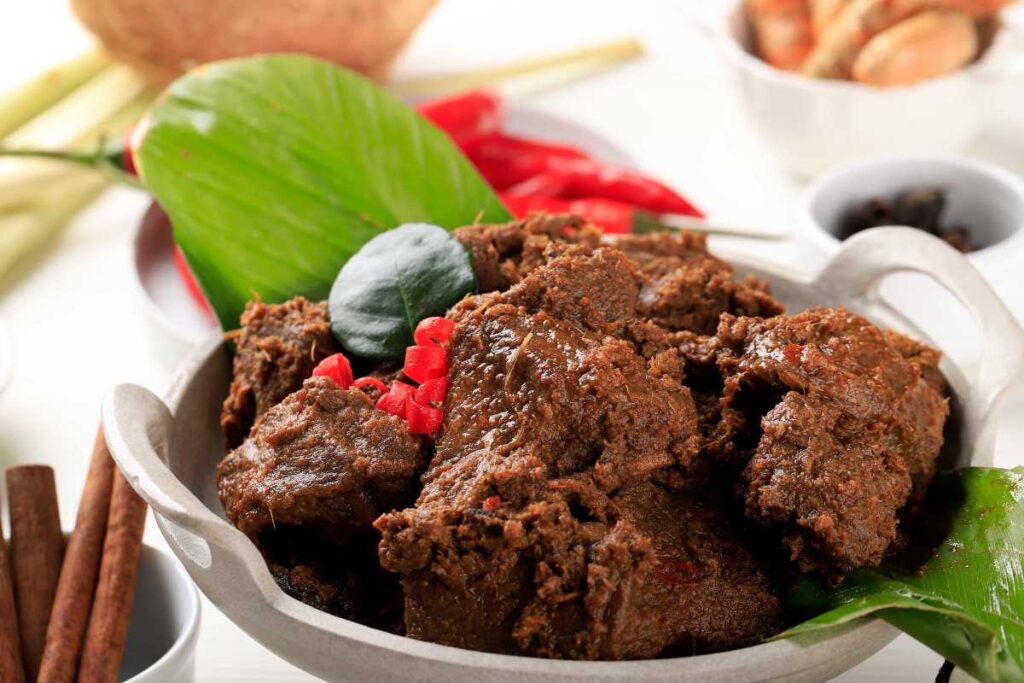
While Indonesian vanilla is often associated with sweet treats and beverages, its versatility extends to savory dishes as well. One notable example is rendang, a rich and flavorful traditional Indonesian beef curry. The addition of Indonesian vanilla to the complex blend of spices in rendang enhances its depth of flavor by introducing warm undertones that complement the robustness of the dish. The result is a melt-in-your-mouth experience where each bite unveils layers upon layers of tantalizing flavors.
Gulai, another popular Indonesian dish, also benefits from the addition of Indonesian vanilla. This aromatic curry typically features meat or vegetables cooked in a spiced coconut milk broth. By incorporating vanilla beans into the mix, it adds an unexpected twist to the overall flavor profile. The warm and slightly sweet notes from the vanilla create an intriguing contrast against the spiciness of the curry, resulting in a harmonious balance that keeps you coming back for more.
Sourcing and Purchasing at Vanillator.com
A reliable online platform offering premium Indonesian vanilla beans directly from farmers
At Vanillator.com, we take pride in being a trusted online platform that connects customers with premium Indonesian vanilla beans sourced directly from farmers. We understand the importance of freshness, quality, and fair prices. By eliminating middlemen and working directly with farmers, we ensure that our customers receive the best possible product.
Wide selection available including both Planifolia (Bourbon) and Tahitensis varieties
We believe in catering to the diverse culinary needs of our customers. That’s why we offer a wide selection of Indonesian vanilla beans, including both Planifolia (Bourbon) and Tahitensis varieties. Each variety has its own unique flavor profile, allowing chefs, bakers, and home cooks to choose based on their specific preferences and recipe requirements.
Transparent sourcing information provided for each product
When you purchase Indonesian vanilla beans from Vanillator.com, you can have complete confidence in the origin and sustainability of the beans. We provide transparent sourcing information for each product, giving buyers peace of mind knowing exactly where their vanilla beans come from. This commitment to transparency ensures that our customers are not only getting a high-quality product but also supporting sustainable farming practices.
Easy ordering process with secure payment options
We understand the importance of convenience. That’s why we have made our ordering process as easy as possible at Vanillator.com. With just a few clicks, you can browse through our selection of Indonesian vanilla beans and add your desired products to your cart. We also offer secure payment options to ensure that your personal information remains safe throughout the transaction.
Worldwide shipping available, ensuring access to Indonesian vanilla globally
Indonesian vanilla is a highly sought-after ingredient worldwide due to its exceptional quality and flavor. At Vanillator.com, we believe that everyone should have access to this culinary gem. That’s why we offer worldwide shipping, ensuring that chefs, bakers, and home cooks from all corners of the globe can enjoy the rich aroma and taste of Indonesian vanilla beans.
Storage and Handling Tips
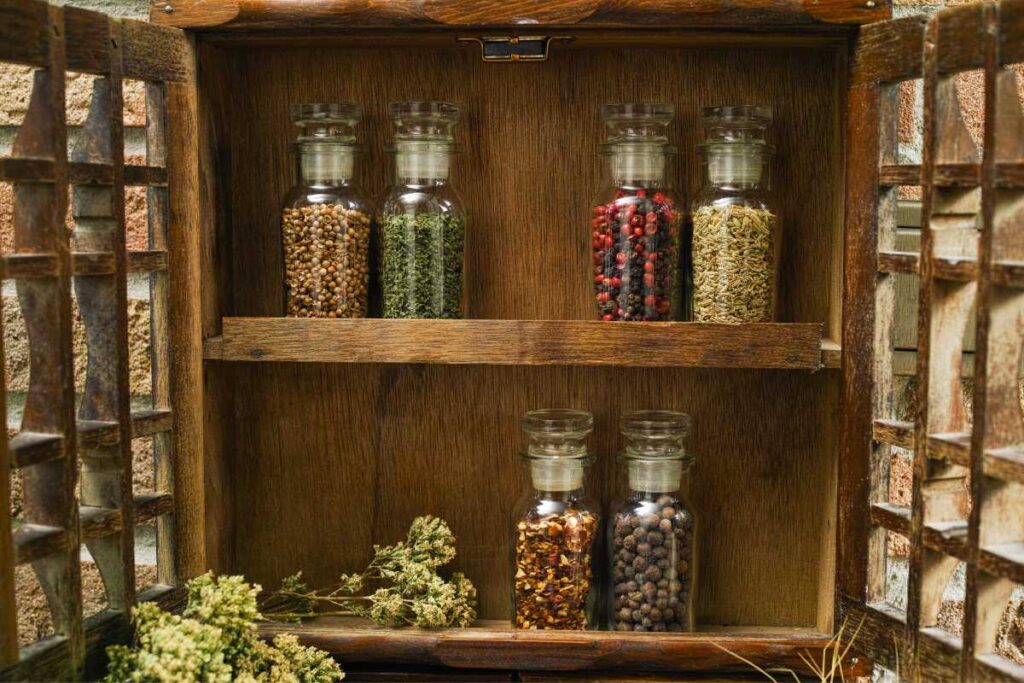
Proper Storage is Key to Preserving the Flavor of Indonesian Vanilla Beans
Following a few simple tips can make all the difference in preserving the delicate flavor and aroma of vanilla extract. To ensure your vanilla beans stay fresh for as long as possible, here are some essential guidelines to keep in mind.
-
Airtight Containers Keep Out Unwanted Elements To protect your precious vanilla beans from exposure to air, moisture, and other contaminants, it’s crucial to store them in an airtight container. This will help maintain their quality over time by preventing oxidation and loss of flavor. Consider using glass jars or resealable bags specifically designed for food storage.
-
Keep Cool, Stay Fresh Vanilla beans thrive when stored at cool room temperature. Aim for around 60-70°F (15-21°C) for optimal preservation. Avoid exposing them to direct sunlight or heat sources like stovetops or ovens, as this can accelerate the breakdown of their natural compounds.
-
Skip the Fridge While refrigeration may seem like a logical choice for extending shelf life, it’s best to avoid storing vanilla beans in the refrigerator. The cold temperature can cause condensation inside the packaging, which can lead to mold growth or spoilage. It’s important to note that vanilla beans are sensitive to moisture and excess humidity.
-
Vacuum-Sealing: A Game-Changer If you have leftover vanilla beans that you won’t be using immediately, consider vacuum-sealing them before storage. By removing excess air from the packaging, you create an oxygen-free environment that helps preserve their freshness for longer periods. Vacuum-sealed beans can last up to two years without compromising their quality.
-
Freezing Extends Shelf Life Another excellent option for prolonging the shelf life of unused vanilla beans is freezing. Before freezing, ensure that the beans are properly wrapped in an airtight container or sealed bag to prevent freezer burn and moisture absorption. When you’re ready to use them, allow the beans to thaw at room temperature before unwrapping.
Handle with Care: Protecting the Fragile Beans
Indonesian vanilla beans are delicate and require gentle handling to avoid breakage or damage. Here’s how you can handle them with care:
-
Avoid Rough Treatment Treat your vanilla beans like precious gems – they deserve delicate handling! Avoid rough movements or squeezing that could cause them to snap or split. Remember, these beans are pliable but not indestructible.
-
Use Clean Hands Before touching your vanilla beans, make sure your hands are clean and free from any strong-smelling substances like garlic or onions. Vanilla pods have a remarkable ability to absorb odors, which can taint their flavor if not handled properly.
-
Cutting Techniques When it comes time to slice open a vanilla bean for scraping out the flavorful seeds inside, take care with your knife skills. Use a sharp paring knife and make a shallow incision along the length of the bean before gently prying it open. This method helps preserve the integrity of the pod while allowing easy access to its aromatic contents.
-
Store Cut Beans Properly If you’ve used only part of a vanilla bean and need to store the remainder, wrap it tightly in plastic wrap or place it in an airtight container before refrigerating or freezing it following the guidelines mentioned earlier.
By implementing these storage and handling tips for Indonesian vanilla beans, you can ensure their longevity and preserve their exquisite flavor profile for all your culinary adventures.
Remember: save those precious vanilla extract pods from direct sunlight, keep them cool but skip refrigeration, vacuum-seal or freeze unused vanilla extract beans for extended shelf life, and handle them with the utmost care. Your recipes will thank you!
The Role of Indonesian Vanilla in the Global Market

Indonesia: A Vanilla Powerhouse
Indonesia, a country known for its stunning landscapes and rich cultural heritage, has also emerged as one of the top producers of vanilla beans worldwide. With its fertile soil and favorable climate, particularly in regions like Sumatra, Indonesia boasts ideal conditions for cultivating high-quality vanilla. This has positioned the nation at the forefront of the global vanilla market.
Contributing Significantly to Global Supply Chain
The output of Indonesian vanilla plays a vital role in meeting the ever-growing demand for this exquisite flavoring agent. Its distinct aroma and superior flavor profile have captivated taste buds around the world, making it an essential ingredient in various culinary creations. From artisanal ice creams to gourmet desserts, Indonesian vanilla adds a touch of indulgence that is hard to replicate.
Growing Demand Driven by Flavor Superiority
One key factor driving the increasing demand for Indonesian vanilla is its unparalleled flavor superiority. The beans harvested from Indonesian plantations possess a unique combination of floral notes with hints of caramel and chocolate undertones. This exceptional flavor profile sets them apart from other varieties and has garnered acclaim among chefs, bakers, and food connoisseurs globally.
Supporting Local Economies and Livelihoods
Beyond satisfying global palates, the thriving Indonesian vanilla industry plays a crucial role in supporting local economies and livelihoods. Small-scale farmers across Indonesia cultivate vanilla crops on their land, creating employment opportunities within their communities. The income generated from these endeavors helps improve living standards while fostering sustainable agricultural practices.
Recognition as a Premium Ingredient
Thanks to its exceptional quality, Indonesian vanilla has earned recognition as a premium ingredient among international buyers. Chefs and food manufacturers seek out this sought-after variety when developing their signature dishes or crafting high-end products. Its inclusion elevates not only the taste but also enhances the perceived value of culinary creations worldwide.
FAQ
How are Indonesian vanilla beans cultivated?
Indonesian vanilla beans are cultivated using traditional methods that have been passed down through generations. Farmers carefully tend to the vanilla orchids, ensuring they receive the right amount of sunlight, water, and nutrients. The process begins with hand-pollination, where each flower is pollinated by hand to ensure proper fertilization. After this, the beans are left to grow and ripen on the vine for several months. Once they reach maturity, they are harvested by hand and undergo a curing process to develop their distinct flavor profile. This careful cultivation method results in high-quality Indonesian vanilla beans that are sought after around the world.
What flavor variations can be found in Indonesian vanilla beans?
Indonesian vanilla beans offer a wide range of flavor variations that make them unique. They boast a rich and creamy taste with undertones of chocolate and caramel. The flavor profile can also exhibit floral notes, adding complexity to various dishes and desserts. Depending on the region where they are grown within Indonesia, there may be subtle differences in taste due to variations in soil composition and climate conditions. These natural flavor variations make Indonesian vanilla beans versatile for use in both sweet and savory recipes.
How can Indonesian vanilla beans be used in culinary applications?
Indonesian vanilla beans are highly valued for their aromatic qualities and versatile uses in cooking and baking. They can enhance the flavors of various desserts such as cakes, cookies, ice creams, custards, and puddings. To extract the intense flavors from these beans, you can split them open lengthwise and scrape out the seeds or use them whole while infusing liquids like milk or cream for a more delicate touch. The leftover pods can also be used to make homemade vanilla sugar or added to beverages like coffee or tea for an extra layer of indulgence.
Are sustainable sourcing practices followed for Indonesian vanilla beans?
Yes! Sustainable sourcing practices play a crucial role in the production of Indonesian vanilla beans. Farmers and suppliers are increasingly adopting environmentally friendly methods to ensure the long-term viability of this precious crop. Many farmers employ organic farming techniques, avoiding the use of synthetic pesticides and fertilizers. There are certifications such as Fairtrade and Rainforest Alliance that promote sustainable practices and fair wages for farmers. By choosing Indonesian vanilla beans with these certifications, consumers can support ethical sourcing while enjoying high-quality products.
Where can I find more information about Indonesian vanilla beans?
For detailed information about Indonesian vanilla beans, you can explore reputable websites, food blogs, or culinary forums dedicated to discussing this topic. These sources often provide valuable insights into different aspects of Indonesian vanilla beans, including cultivation methods, flavor profiles, and culinary uses. You may also find customer reviews and recommendations on where to purchase authentic Indonesian vanilla beans. It’s important to gather information from reliable sources to ensure you make informed decisions when buying this sought-after ingredient.
How can I determine the quality of Indonesian vanilla beans?
The quality of Indonesian vanilla beans can be determined by factors such as their moisture content, plumpness, aroma, and appearance. Look for beans that are moist but not wet, firm yet flexible, and have a strong, sweet fragrance.
Can I use Indonesian vanilla beans in savory dishes?
Absolutely! Indonesian vanilla beans can add depth and complexity to savory dishes such as marinades, sauces, and stews. Their unique flavor profile enhances both sweet and savory recipes.
How long do Indonesian vanilla beans typically last?
When stored properly, Indonesian vanilla beans can retain their flavor for up to two years or more. However, it’s best to use them within one year for optimal results.
Can I use Indonesian vanilla extract instead of whole beans?
Certainly! Indonesian vanilla extract offers convenience when you need a quick burst of flavor. However, using whole beans allows you to infuse your recipes with the full range of aromatic qualities found in these exquisite pods.
Remember that Vanillator.com provides detailed information on each product they offer along with customer reviews that can further assist you in making an informed purchasing decision.
Conclusion
In conclusion, Indonesian vanilla beans offer a rich and diverse flavor profile that is highly sought after in the global market. With a brief history of cultivation in Indonesia, we can appreciate the expertise and tradition that goes into producing these exquisite beans.
The lifecycle of a vanilla bean showcases the intricate process involved in growing and harvesting these precious pods. From pollination to curing, each step contributes to the development of their unique flavors.
Indonesian vanilla beans are known for their distinct flavor profile, characterized by sweet and creamy notes with hints of floral and fruity undertones. This exceptional taste makes them a popular choice among chefs and culinary enthusiasts worldwide.
There are two main types of Indonesian vanilla beans: Planifolia and Tahitensis. Each variety offers its own distinct qualities, allowing for versatility in various culinary applications.
Indonesia boasts several regions renowned for their ideal growing conditions for vanilla beans. These regions include Java, Bali, Sumatra, Sulawesi, and Papua. The diverse climates contribute to the unique characteristics found in each batch of Indonesian vanilla.
Sustainability plays a crucial role in the cultivation of Indonesian vanilla beans. By implementing sustainable practices such as organic farming methods and fair trade initiatives, farmers ensure the long-term viability of this valuable crop while supporting local communities.
Indonesian vanilla beans are typically harvested between May and August when they reach optimal maturity. This careful timing ensures that the flavors are at their peak when used in culinary creations.
Traditionally, Indonesian vanilla has been used in various cuisines around the world to enhance desserts, beverages, and savory dishes alike. Its aromatic qualities add depth and complexity to any recipe it graces.
If you’re looking to source high-quality Indonesian vanilla beans, Vanillator.com is your go-to destination. They offer a wide selection of premium-grade products that have undergone rigorous quality control measures to guarantee customer satisfaction.
To preserve the freshness and quality of your purchased Indonesian vanilla beans, it is essential to store them properly. Keep them in an airtight container in a cool, dark place away from direct sunlight and moisture.
Indonesian vanilla beans play a significant role in the global market, with their exceptional quality and distinct flavor profile. Their demand continues to grow as more people discover the delights they bring to culinary creations.




